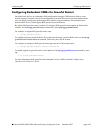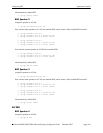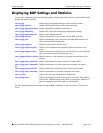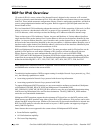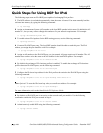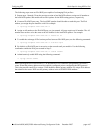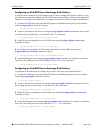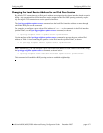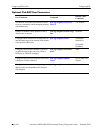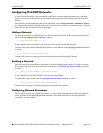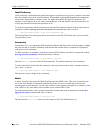
Configuring BGP Quick Steps for Using BGP for IPv6
OmniSwitch 6800/6850/9000 Advanced Routing Configuration Guide December 2007 page 4-67
The following steps create an IPv6 BGP peer capable of exchanging IPv6 prefixes:
1 Repeat steps 1 through 3 from the previous section to load the BGP software, assign an AS number to
the local BGP speaker, and enable unicast IPv6 updates for the BGP routing process, respectively.
2 Create an IPv6 BGP peer entry. The local BGP speaker should be able to reach this peer. The IPv6
address you assign the peer should be valid. For example:
-> ipv6 bgp neighbor 2001:100:3:4::1
3 Assign an AS number to the IPv6 BGP peer you just created. All peers require an AS number. The AS
number does not have to be the same as the AS number for the local BGP speaker. For example:
-> ipv6 bgp neighbor 2001:100:3:4::1 remote-as 10
4 To enable the exchange of IPv6 unicast prefixes between IPv6 BGP peers, use the following command:
-> ipv6 bgp neighbor 2001:100:3:4::1 activate-ipv6
5 By default, an IPv6 BGP peer is not active on the network until you enable it. Use the following
command to enable the IPv6 peer created in Step 2:
-> ipv6 bgp neighbor 2001:100:3:4::1 status enable
6 Administratively enable BGP using the following command:
-> ip bgp status enable
Note. In homogeneous IPv6 networks (i.e., in the absence of IPv4 interface configuration), the router's
router ID and the primary address must be explicitly configured prior to configuring the BGP protocol.
This is because the router ID is a unique 32-bit identifier and the primary address is a unique IPv4 address
that identifies the router. BGP uses the primary address in the AGGREGATOR attribute.



